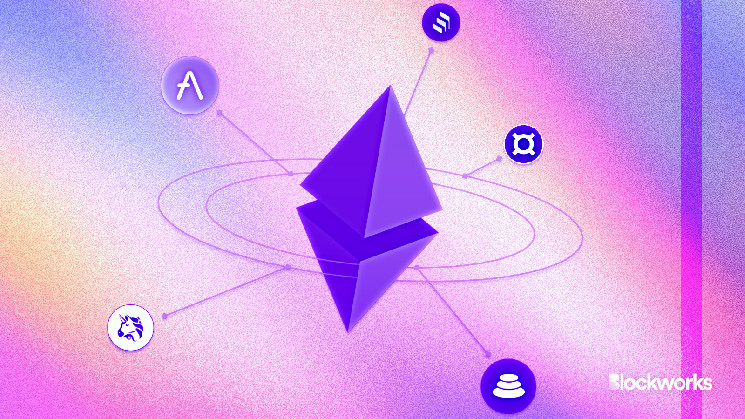Retail investors, priced out of Ethereum mainnet by high gas fees and shifting their attention to layer-2 rollups, now have a 1-click yield vault option on Arbitrum, courtesy Sommelier Finance.
The first foray into Arbitrum One will be Sommelier’s Real Yield ETH vault, which generates yield by providing liquidity and taking leveraged positions on staked ether (ETH).
The DeFi protocol, built as a Cosmos app-chain, was technically already multichain, given that its initial vaults — called “cellars” — are on Ethereum mainnet, while managed via the native app-chain. Since launching in April 2023, Sommelier has attracted around $60 million in deposits across a growing list of vault offerings.
The planned expansion to Arbitrum was announced in May 2023 and caps two years of research and development work, according to Sommelier co-founder Zaki Manian, which will grow to encompass more chains later this year.
“We’ve had to glue together, IBC, Axelar [general message passing], Chainlink [cross-chain interoperability protocol] all like working together in this machine,” Manian told Blockworks. “Ultimately, it will deliver this user experience where you can feel like you are being part of a native layer-2 experience, but it’s really getting you best-in-class yields from pretty much anywhere.”
Read more: DeFi Strategies Get a Multichain Boost From Sommelier and Axelar
The non-custodial vaults connect multiple DeFi protocols according to strategies designed by Seven Seas Capital, a team of 5 which spun out of Sommelier early in its development.
Seven Seas not only develops the vaults strategy but independently audits the protocols they select, in an effort to mitigate both financial and smart contract risks for end users, said CEO Sun Raghupathi.
“Arbitrum, from a DeFi economic risk perspective, it’s a little bit lower than doing things on other [layer-2s] because there’s more liquidity there,” Raghupathi told Blockworks.
The initial vault only uses ETH and Lido stETH, in Uniswap and Aave, which Raghupathi calls “as blue chip as you can get.”
“Obviously, there are riskier protocols on Arbitrum,” he said. “We are not touching those yet, but I think there is something to be said about the risk appetite being higher on L2s.”
Seven Seas’ team background is in data science, financial modeling, and smart contract development, and its vaults have appealed to DeFi protocols looking to attract TVL — particularly those specializing in the liquid stating ether and restaking using Eigenlayer.
When employing leverage, the team backtests strategies against the prior 6-12 month range of historical volatility and chooses parameters to keep the strategy safe. Through a combination of design and active management, they have successfully avoided losses during tumultuous periods such as the March 2023 USDC depeg and the July 2023 Curve exploit.
“I think it’s like been extremely validating for Sommelier as a system, because what we’ve been able to do as strategists is ingest, not just on-chain data, but even things like news events, sentiment from Twitter and stuff like that, and to get out from under these events before they happen,” Raghupathi said.
Manian thinks the infrastructure Sommelier has built is primed to expand the multichain future of Ethereum.
“We have this ability to have vaults that hold positions across multiple chains,” he said. “So what this ends up being is, we can now have these Arbitrum cellars, but they could hold positions on Base on Mantle, on kind of anywhere.”
 blockworks.co
blockworks.co
